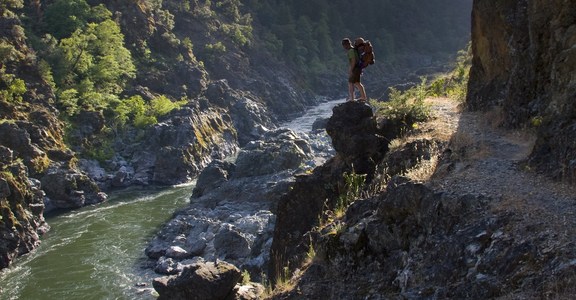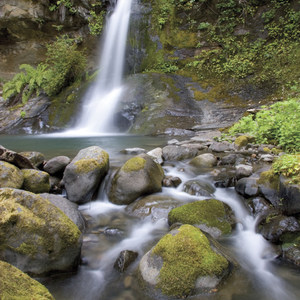North Fork of the Big Wood Overview
The North Fork of the Big Wood drainage is the hiking epicenter of the Boulder Mountains. The main canyon accesses two large tributaries, the West Fork of the North Fork (WFNF) and the East Fork of the North Fork (EFNF). The hikes ascend dramatic, steep-walled canyons, that access multiple alpine cirques ringed by the highest peaks in the range.
The underlying geology of the North Fork of the Big Wood River is a combination of sedimentary and volcanic rock. Neither is particularly durable, and both rock units tend to break apart. A wide variety of individual rock units provide a wash of reddish and brown hues that blend together in large, sweeping faces of talus and scree in the upper elevations. Below treeline, much of the underlying rocks are covered with forests and soil, but canyon walls are consistently steep down to the valley floor.
Amber Lakes
This switchback-heavy trail up to the Amber Lakes Basin reaches a small “pond.” Two additional lakes are nestled in rocky bowls a few hundred feet above and are easily visited with a little Class 2 scrambling. It’s a long trip into this secluded north-facing basin, but it is certainly worth a day’s exploration.
The route begins on the West Fork of the North Fork Trail. After a mile of easy walking through a pretty Douglas fir forest, a junction turns left to begin the climb up to Amber Lakes. There is no bridge at the creek crossing, which can be intimidating and dangerous during the runoff. Several long switchbacks climb through a thick lodgepole pine forest and help keep the grade to a minimum.
Once in Amber Gulch proper, the trail zigzags into and through a large talus field of red, weathered igneous rock. From here the route travels through small, dense trees that are re-vegetating avalanche paths from both sides of the canyon. It is not uncommon to encounter debris from winter slides that obstruct the trail. The trail continues past some open meadows and through several more switchbacks before reaching the lowest Amber Lake.
Additional Adventures
The West Fork of the North Fork Trail continues for 3 miles up the canyon and passes several pretty waterfalls before petering out around 9,400 feet. There is an off-trail hike to Window Lake that is an ambitious undertaking for a day hike, but it is well worth the effort.
Off-Trail Hiking
The upper two Amber Lakes are far more scenic than the small pond at the end of the trail. If you have the energy, there is a relatively straightforward off-trail loop linking the two lakes that is worth the trip. The loop can be hiked in either direction
Reference: All content excerpted from Exploring Sun Valley - A Comprehensive Guide to the Boulder, Pioneer, and Smoky Mountains by Idaho River Publications.
Logistics + Planning
Current Weather: Powered by Dark Sky







Preferable season(s)
Congestion
Parking Pass
Pros
Cons
Trailhead Elevation
Features
Suitable for
Our mission is to inspire adventure with beautiful, comprehensive and waterproof map-based guidebooks. Owner, publisher, and photographer Matt Leidecker, grew up exploring and guiding on the rivers in central Idaho. His award winning Middle Fork of the Salmon River – A Comprehensive Guide is the standard by which other river guidebooks are measured. Printed on virtually indestructible YUPO paper, IRP guides are truly unique all-in-one resources for adventure. Each book is loaded with full-color maps, stunning photographs, and information on the history, geology, and wildflowers. Visit Idaho River Publications to explore our guidebooks to the Rogue River in Oregon and the mountains of Central Idaho.


















Comments
Sign In and share them.